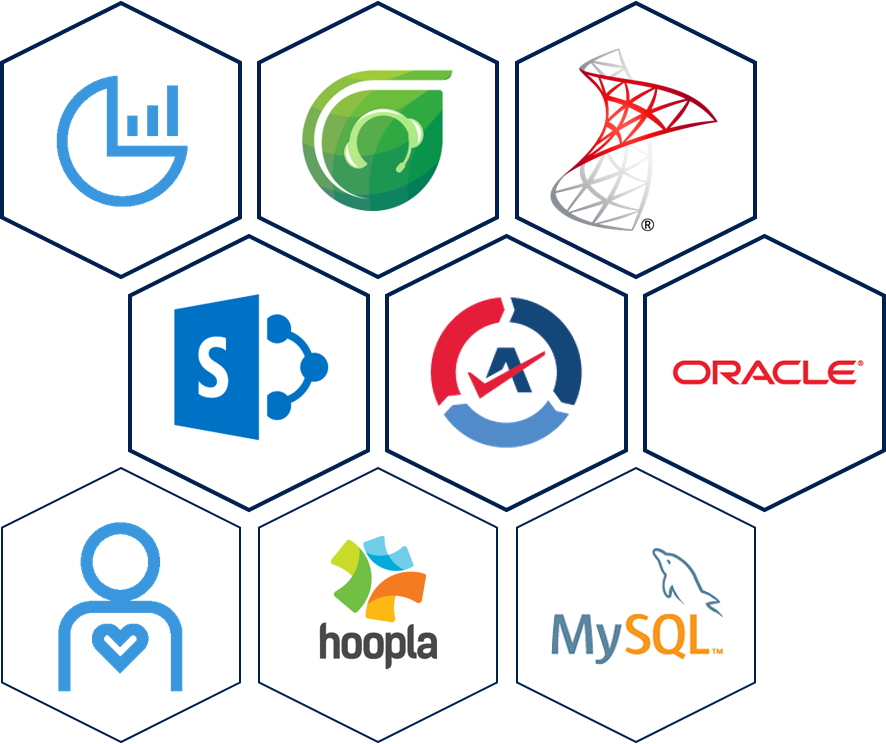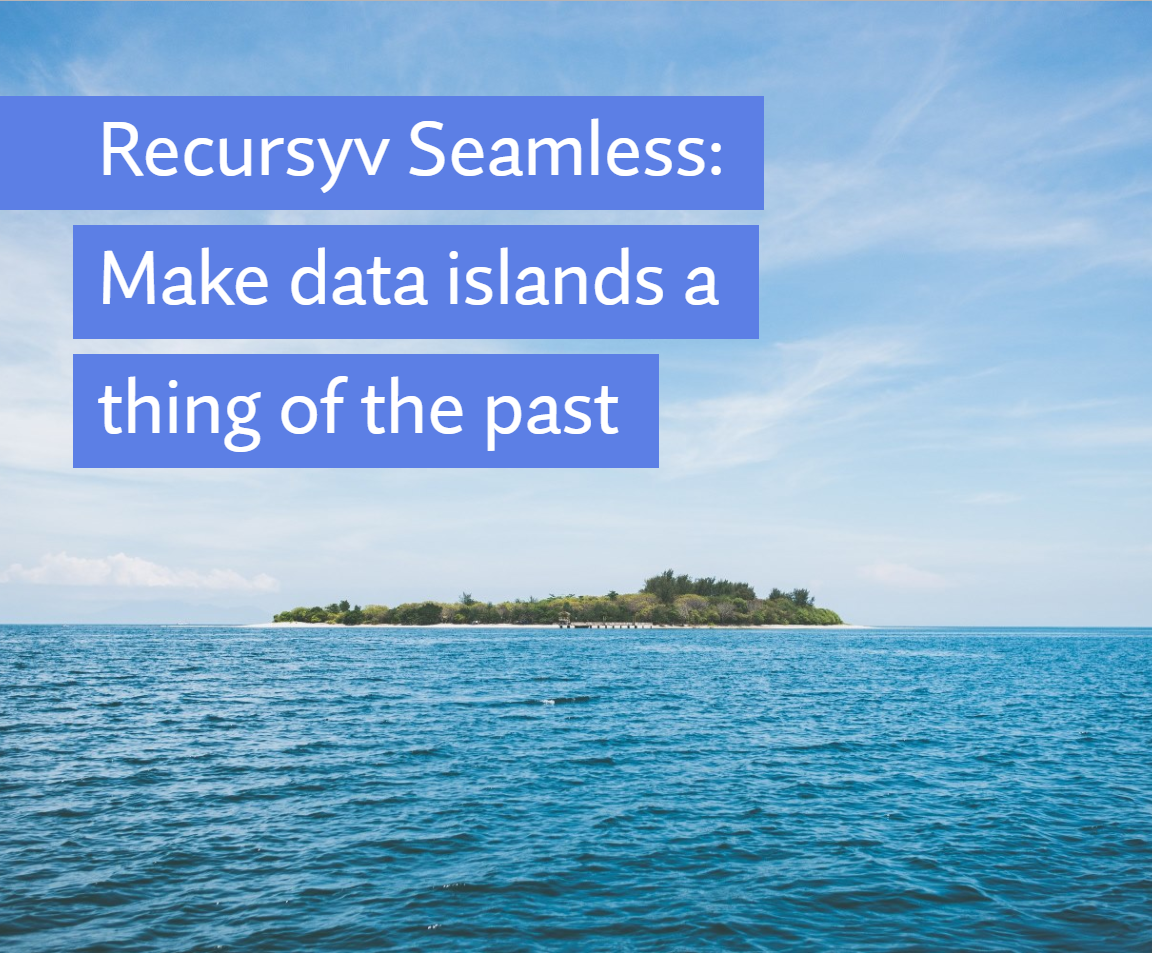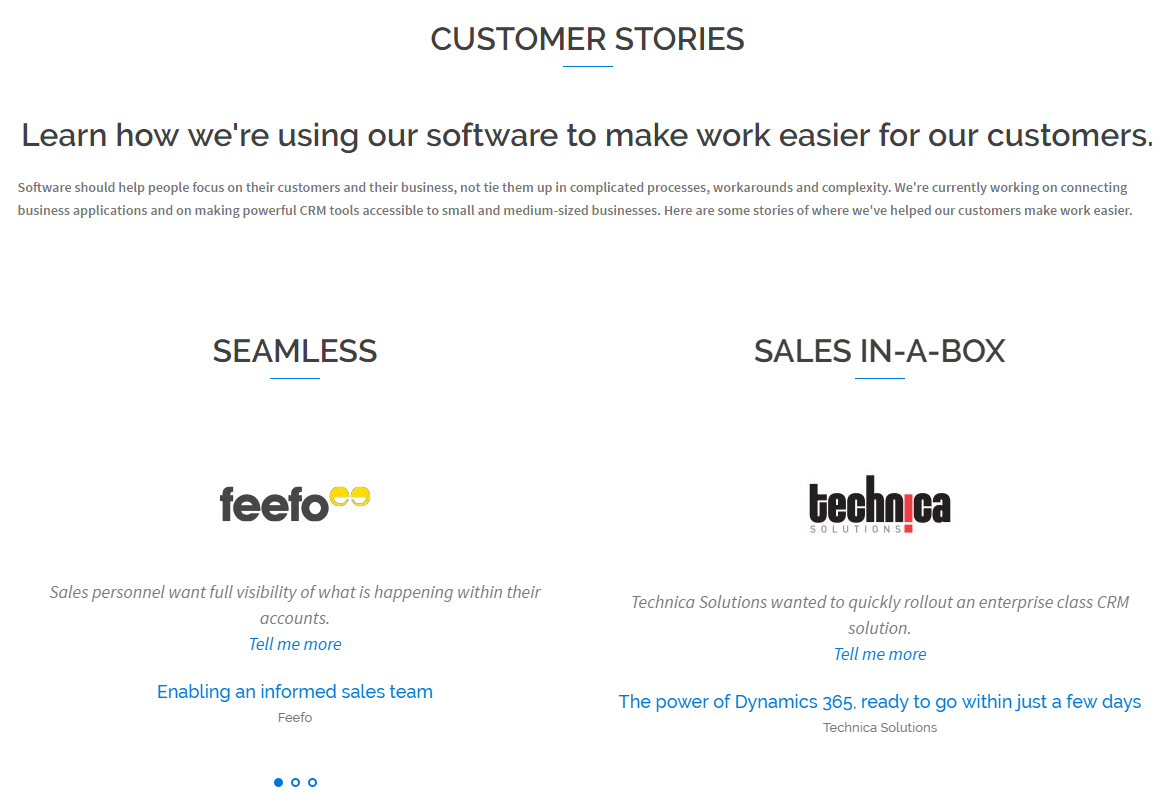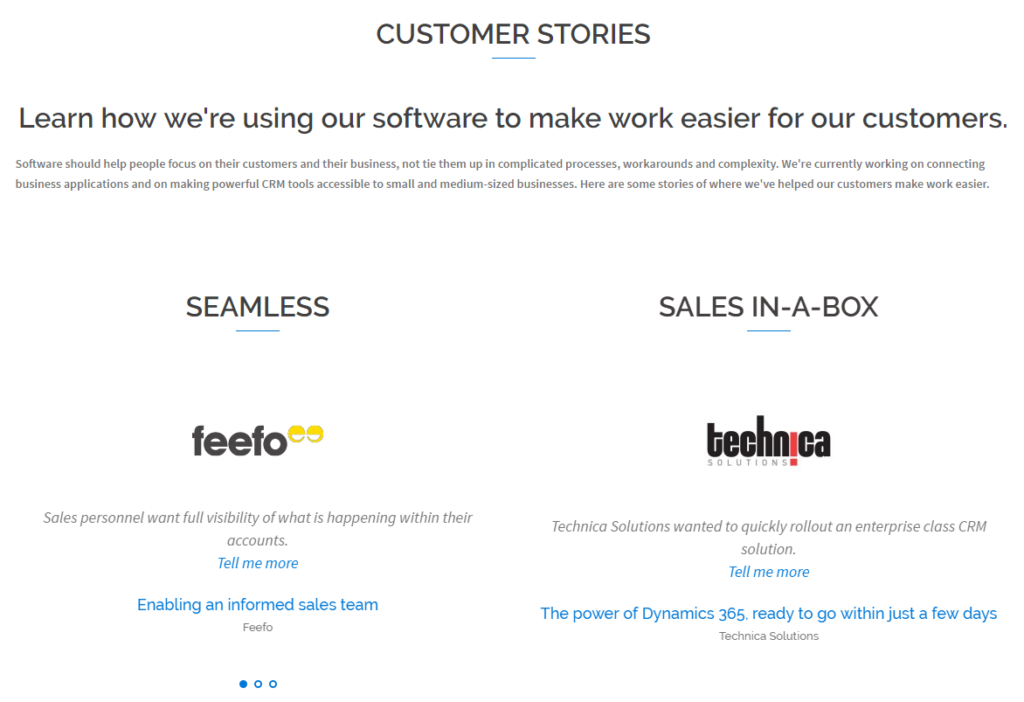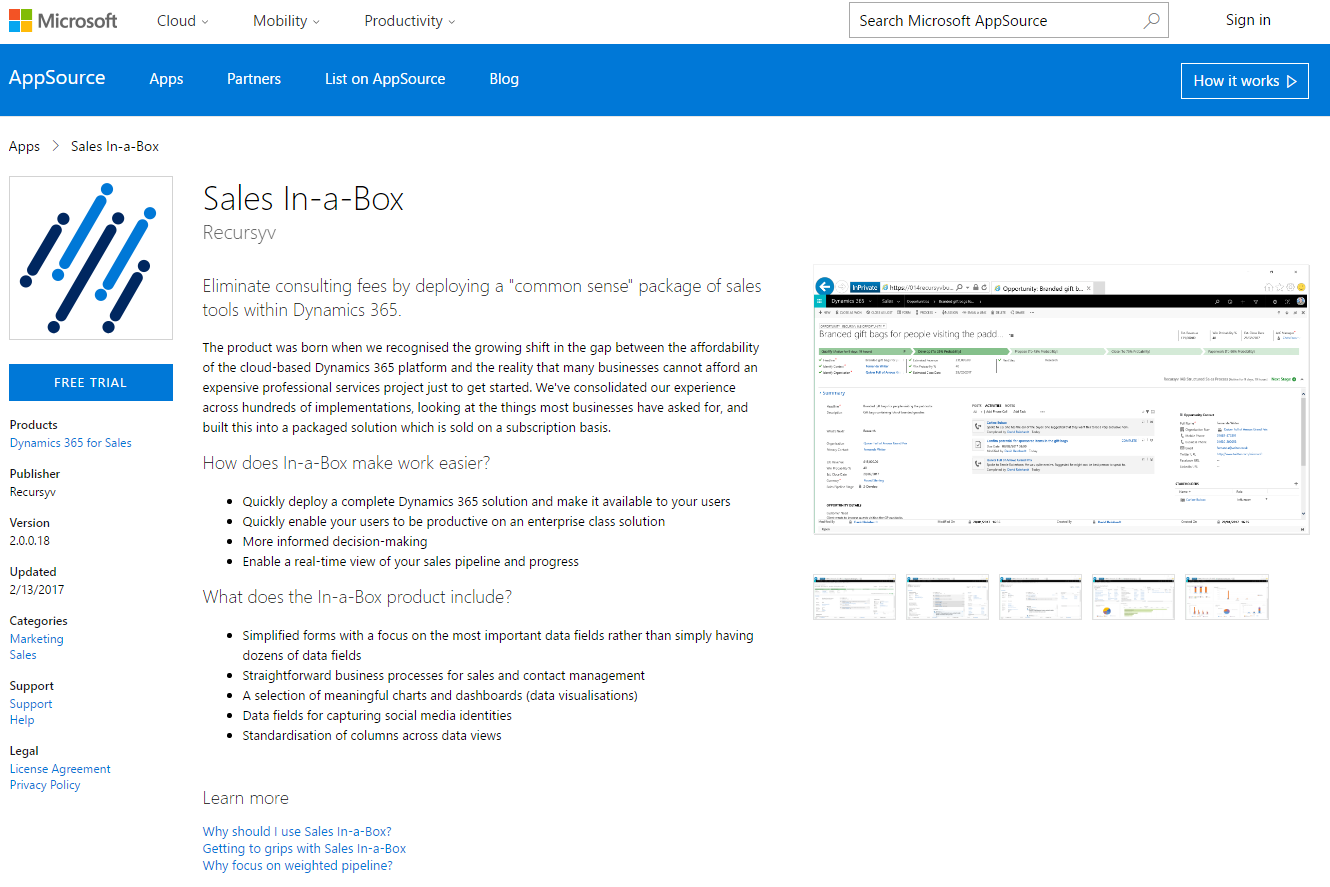As part of the revamped licensing for Dynamics 365, Microsoft (MS) is also introducing a new “flavour” of the solution – Dynamics 365 Business Edition. This is pitched to be a scaled-down version of the whole Dynamics 365 offering (known as Enterprise Edition) and, as best we understand at the moment, will come to include most of the significant functional areas of Dynamics 365 (i.e. Sales, Customer Service, etc.). The SME focused accounting/financials offering, formerly known as Project Madeira, is already available in the US under the Business Edition licensing. UK release dates are currently pencilled for some time in spring 2017.
This begs a fundamental question for Recursyv: In-a-Box products, should we even bother? (Whoah – deep breath!) In a recent post, we shared the design ambition for the In-a-Box product suite (IaB). If you don’t have the inclination to click through it can be summed up as “paring down the enterprise toolkit within Dynamics 365 to suit the needs of small/medium businesses both in terms of reducing up-front cost and ability to be rapidly deployed”. (We’re getting the marketing department working up mugs with that wording on it any day now). This is part of our vision of work made easier.
We’ve spent some time discussing and debating whether there is a genuine future for our product. It is a sobering thought that forced the consumption of many chocolate-chip cookies. Is it worth putting time and effort into building and promoting IaB when MS are pursuing the same market space with Business Edition? After the consumption of far too many chocolate-chip cookies and fuelled by a sugar-rush high, we’ve decided to progress. Here’s why…
- ‘Spring’ is 6 months away and that release date is not cast in stone. It is likely, but it could be pushed out. On top of that, partners will need a few weeks/months to get their heads around the new offering and what it does. Businesses who need something now aren’t going to stand still for 9 – 12 months.
- It seems unlikely that MS will be able to get the solution absolutely right for all small/medium businesses and some degree of configuration/customisation will be necessary. Admittedly, this is skating on thin ice as our proposition assumes we’re using our experience to build a “one size fits most” solution. That’s not to say we don’t believe MS will build a remarkable solution, we do – we’re staking our business on the development of the platform after all. However, we also believe that our experience in speaking to local users over many years brings value which we’ve built into IaB and we’re not convinced this is easily replicated.
- It seems likely that Business Edition will be a platform which can be extended (i.e. like all previous versions of Dynamics). We expect that we will be able to deploy the IaB solution on top of Business Edition. And if we can’t, we have the design specifications and we can rebuild it on Business Edition relatively quickly. (The value of IaB is in the design decisions made to specify the solution, the actual build is made relatively straightforward by the power of the Dynamics 365 platform).
There’s one final consideration, and an important one at that – price. MS have introduced a number of “pre-business edition” offers on Dynamics 365 targeted at customers who are likely Business Edition candidates (i.e. user communities < 25 users). If customers take Dynamics 365 on these prices, they’re able to stay on the offer price for 36 months with no obligation to move to Business Edition in that timeframe.
In practice, this means that we can achieve our vision of making work easy by quickly getting customers experiencing the power of Dynamics 365 at very compelling pricing. In time (i.e. at some point in the next 3 years), we’ll have conversations with those customers about the best next step and whether that involves IaB, Business Edition and/or Enterprise Edition. Of course, during those 3 years, the IaB and Business Edition products will undoubtedly mature further creating an even richer set of options.
If you want to discuss deploying IaB within your business, or get more insight on the pricing offer, please contact us.
Additional note: as you’d imagine, there are more terms associated with the interim pricing offer than make for compelling reading as part of a blog post. These include being subject to MS annual increases (as you would be on all MS subscription prices). Recursyv prices transparently and will share the MS platform pricing separately from the Recursyv IaB pricing. Please get in touch to discuss the details further.



